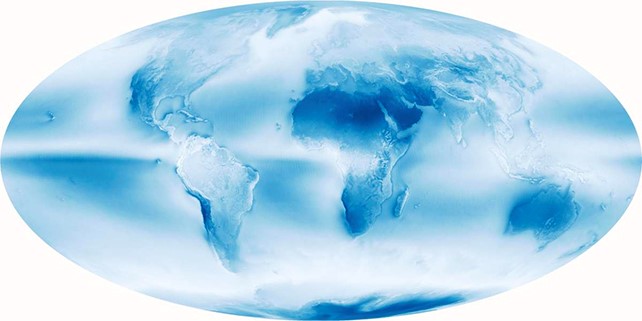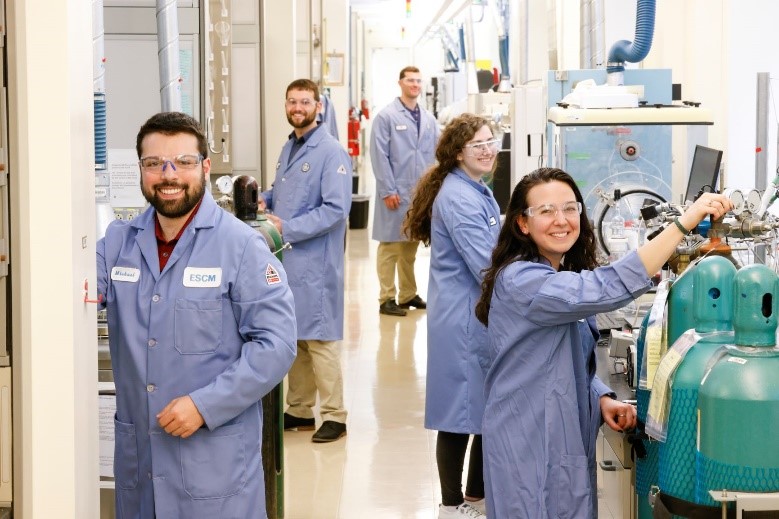Earth’s inner-inner core or Earth’s immaculate shine is natural phenomena that scientists have studied for decades. Here are scientific research to bring useful information about the Earth and methods to reduce CO2 to help protect the Earth.

Seismologists from the Australian National University found evidence that inside the Earth’s core is a smaller, innermost core.
“The existence of an internal metallic ball within the inner core, the innermost inner core, was hypothesized about 20 years ago. We now provide another line of evidence to prove the hypothesis,” said Thanh Son Pham, coauthor of a paper in Nature Communications.
Pham and his collaborator studied the reverberations of large earthquakes that traveled through the planet’s core and “bounced” back to their point of origin. Comparing the travel times of the seismic waves, they inferred that there is a center region that is different from the outer layer of the core — a newly identified fifth layer of the Earth.

Scientists at the University of Washington discovered two previously unknown forms of frozen salt water.
The finding may help researchers who are working to make sense of unfamiliar chemical structures on other planets in the solar system. While trying to study how salt affects the formation of ice on much colder planets under much higher atmospheric pressure, Baptiste Journaux and his team made what he called a rare “fundamental” discovery.
They compressed salt water at up to 25,000 times Earth’s atmospheric pressure while lowering the temperature below –190 degrees Fahrenheit. Surprisingly, ice crystals began forming in arrangements never before seen on Earth. When salt water freezes naturally on Earth, it arranges into a lattice structure of one salt molecule for every two water molecules. In the experiment, published in PNAS, salt water froze in different arrangements (two salt molecules for every 17 water molecules and one salt molecule for 13 water molecules), consistent with the chemical signatures observed on other planets’ ice moons.

An international team of scientists explained why planet Earth has a uniform glow.
When seen from space, Earth is uniformly bright, despite differences in the hemispheres that should affect how much sunlight gets reflected. The new study, in PNAS, solves a decades-old mystery and could help scientists implement geoengineering solutions to combat climate change, said co-author Yohai Kaspi.
Albedo is how much sunlight is reflected from the planet’s surface. Lighter areas, such as the snow cover of the northern hemisphere, reflect more light than dark surfaces, like the oceans that cover much of the southern hemisphere. To determine why these differences in albedo aren’t apparent from space, Kaspi and his collaborators cross-referenced satellite, storm, and cloud-cover data. They determined that while the southern oceans absorb more sunlight, they also produce more storms and storm clouds, which reflect solar radiation.
Scalable Direct Air Capture System for CO2 Removal

GE Research and the GE Vernova business have been partnering closely with the U.S. Department of Energy (DOE), the Advanced Research Projects Agency (ARPA-E), and a host of other industry and academic research partners to accelerate new advancements in CO2 removal.
GE’s Carbon Capture Technology Breakout Team has developed a unique DAC system that couples its decades of experience designing thermal management solutions and material systems expertise to develop innovative sorbent materials for CO2 capture. With GE’s DAC system, the thermal management design provides an optimal environment for the sorbent materials to remove CO2 from the air. The team is employing a similar approach in a project with the Defense Advanced Research Projects Agency (DARPA) to capture clean, potable water from extremely arid, desert-like air.





